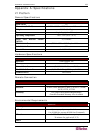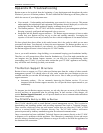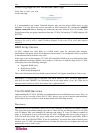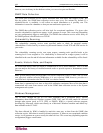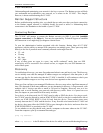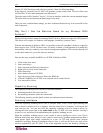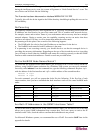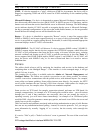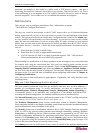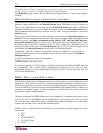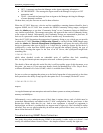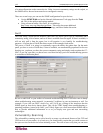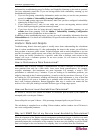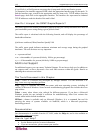
APPENDIX B: TROUBLESHOOTING 111
the Admin tab, Network Management, and Configure Pollers. For each service that responds
during the intelligent service scan, the system will generate a “Node Gained Service” event. The
text of this event will look like the following:
The X service has been discovered on interface WWW.XXX.YYY.ZZZ
Typically, this will also be the signal to the Pollers that they should begin polling this new service
for availability.
Re-Parenting
The capability scanning service is also responsible for re -parenting. Re-parenting occurs when two
IP addresses are discovered to be part of the same node. This is common with network devices,
for example, routers and switches. Some of your workstations and servers may also have multiple
network adapters. During a routine scan, the capability scanning service can notice that these
interfaces are related. If it does, it will re-parent them under the correct node.
Re-parenting will take place if one or more of the following happens:
• The SNMP table for a device lists both IP addresses as interfaces for the device.
• The NetBIOS node name for both IP addresses is the same
If re-parenting is not occurring correctly, you should check to see that the managed device is
providing the necessary information. Depending on the type of device and the services it provides,
you will need to check either the NetBIOS node names are resolving correctly or that the SNMP
interfaces table contains both addresses. Details on each are provided below.
Do the NetBIOS Node Names Match?
To check that the NetBIOS node names match, you will need to do a reverse lookup on the IP
Address, using NetBIOS name resolution. On a Windows 2000 system, you can use a command
line utility called nbtstat. From the command line, type the following commands. Replace <ip1>
with the address of the first interface and <ip2> with the address of the second interface:
nbtstat –A <ip1>
nbtstat –A <ip2>
For each command, you will see output that looks like the following. If the first line of each
output matches, then you have confirmed that both interfaces resolve to the same NetBIOS node
name:
Name Type Status
LARRY <00> UNIQUE Registered
RARITAN <00> GROUP Registered
LARRY <03> UNIQUE Registered
LARRY <20> UNIQUE Registered
RARITAN <1E> GROUP Registered
Are Both IP Addresses in the SNMP Interfaces Table?
To check that both IP addresses are in the SNMP interfaces table, you will need to use a tool that
allows you to query SNMP information from a remote host. First, run a query to retrieve the IP
interfaces table. Next, check the table to confirm that both addresses are present.
For Microsoft Windows systems, we recommend the use of GetIF. See section
GetIF later in this
appendix for details.



